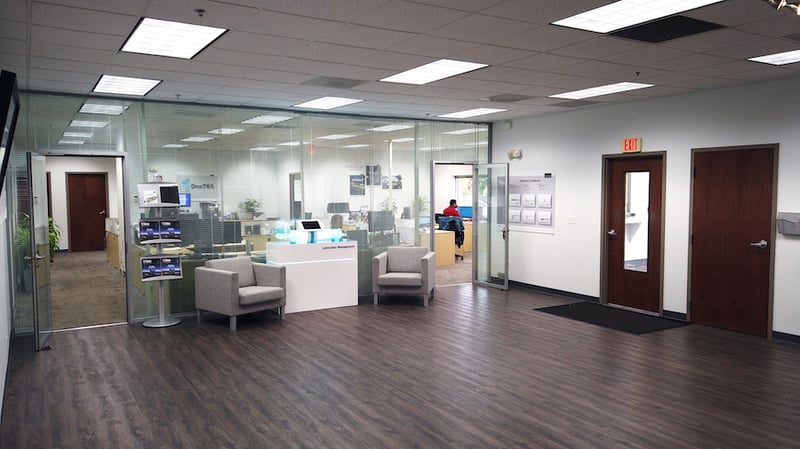
Is it time for an LED-to-LED Conversion?
The light-emitting diode (LED) is now the marketplace's most widely developed and energy-efficient lighting technology. Advancements in LED lighting systems have come very far, very quickly. So quickly, in fact, that even if you installed LED lighting just five years ago, substantial savings and efficiencies with an LED-to-LED conversion can be experienced.
Evolution of Lighting Technology
The efficiency of LED tubes has increased substantially since becoming widely available in 2014. In the last eight years alone, lumens-per-watt, the standard measure of the energy efficiency of lighting, has doubled and L70 lifetimes have quadrupled.
(Figure 1) Recent Evolution of Lighting Technology
Realizing an advantageous return on investment (ROI) on an LED conversion in three years or less is becoming more common today, depending on annual burn time, kWh rates, and availability of utility rebates for DLC-certified products.
"Waiting to upgrade from fluorescent lighting or first-generation LED lighting could cost you substantial energy and maintenance savings every day."
History of LED Technology
The first commercial LEDs were invented in 1962, and General Electric took them to market in 1963 at $200 per emitter! As scientists experimented with materials in the 1990s red LED emitters became bright enough for commercial use. Early uses were red stop lights, electronic message centers and backlighting sign channel letters. Before that LEDs of whatever color were mostly just used as indicator lights in electronics.

Then in the early 2000s, green, orange, yellow, and blue LEDs were created. The development of blue made white LED emitters possible and served as the foundation for today’s commercial, industrial, and residential LED lighting. The early challenges were many. Heat sinking technology needed to be advanced since heat degrades LEDs. White light using blue LEDs is accomplished by using phosphor conversion, just as blue mercury gas in a fluorescent tube is converted to white light as it passes through the phosphor coating on the glass tube. But in the early 2000s, the phosphor coating the LED emitter was very elementary, as was the production of the blue LED. The consequence was that the widespread use of white LEDs was delayed by five or more years for basic applications until runs of white LEDs could have an acceptable level of color consistency. Finally, the inefficiencies kept the costs too high for all but a few applications until 2009-2010.
The first extensive program for US LED was converting refrigeration lighting in over 6,000 convenience stores in 2010. That application had the combined advantages of a cool environment and long hours of operation. That was followed by a 5,000-location conversion of the troffers, again justified by the long hours of operation and the manufacturing cost advantages of producing 126,000 fixtures for one program.

Over the ensuing ten years, almost every lighting application has been converted to LEDs. One is hard-pressed to think of a light source that is not based on LEDs as the light engine, whether in the home, a sports stadium, a flashlight, automobile headlights, or a desk lamp. End users everywhere in manufacturing, retail, education, hospitality, and sporting venues recognize the benefits of LED lighting and adopt LED technology as their standard.
Making the Switch
The focus of an LED-to-LED conversion is to install the latest generation of energy-efficient LED lighting replacing the less efficient earlier generation LED tubes, bulbs, and fixtures. In the early development days, LED lighting had an extensive range of efficacies produced. Unfortunately, all manufacturers did not improve products' efficacies uniformly over time. As a result, many products' efficacies are woefully behind an even acceptable efficiency level even today.

Consequently, there is no specific date of manufacture before which a new LED product can justify replacing the earlier LED product. However, using the leading LED tube product identified in Fig. 1 can probably justify the replacement of virtually all LED tubes installed in 2016 or before and many installations in the years since, depending on the hours of usage, energy costs, and rebates available. Though the efficacies of other LED lighting applications, such as high bays, have also improved, the cost of labor to replace an existing fixture may offset the energy savings.
The first step in determining the efficacy of an LED-to-LED conversion is to conduct a lighting audit that provides critical information such as quantities, types, sizes, wattage, and hours of operation of existing fixtures. An audit should also include property dimensions, usage, footcandle requirements, and electric rate (price per kWh). Once the audit is complete, the project managers can create a lighting plan utilizing the new generation of LED lighting solutions and calculate the ROI.
What Else To Consider For LED-To-LED Conversions?
When ready for the new conversion, there are additional questions to consider before executing the project:
-
Can any of the original work be reused? For instance, a re-lamp project could utilize existing housings when replacing a Type B LED tube.
-
Were any parts of the property not previously converted? The facility utilization has changed or if LEDs weren't installed originally, they could be with the new conversion.
-
Would additional features make sense? For example, new lighting controls or an energy management system might make sense based on the facility's needs.
-
Are there more incentives? The utility companies might be offering additional funding, or new financial assistance programs might be available.

Alternative Funding for Conversions
While LED installations can realize an ROI in three years or less, the upfront conversion costs could still seem prohibitive. Multiple providers also offer leasing or Lighting as a Service (LaaS) to mitigate these costs, an emerging model used to implement energy-efficient lighting projects without upfront capital (see Fig.3). This scenario allows the end-user to install new LED lighting and have it maintained over the program's life with only a monthly service agreement payment. Cash flow can be positive on day one with either leasing or LaaS because the energy savings and maintenance mitigation can pay for the program.

Join the New LED Revolution
The latest LED lighting revolution has substantially greater efficiencies and longer lifespans, reducing electricity costs and positively impacting the environment. These best available efficiencies are so revolutionary that even if you already have LED lighting, you can still recapture significant energy savings, improve lighting performance, and support sustainability initiatives.










